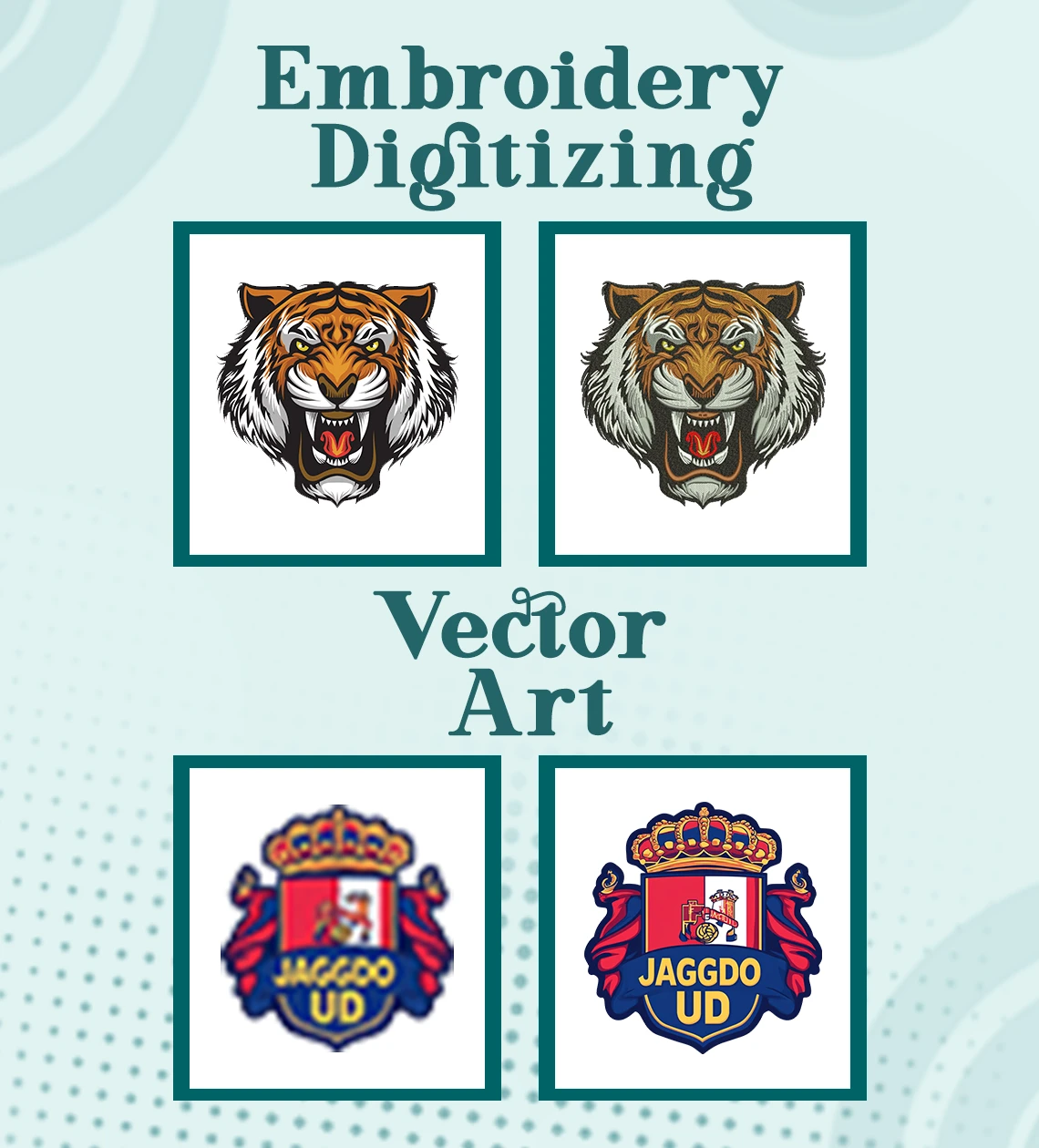
Embroidery needles have many parts, Each is meant to have a different purpose to achieve a smooth stitch. Knowing these parts helps you to choose the best needle for the fabric and thread you're working with.
The main body of the needle varies in thickness depending on the needle size.
The part of the needle that fits in the machine or handle. It is typically flat on one side for stability.
The hole through which the thread passes. In embroidery needles, the eye is usually larger to accommodate decorative threads.
A slight indentation above the eyelets the bobbin hook catches the top thread without fraying.
The tip of the needle pierces the fabric. Embroidery needles often have a slightly rounded point to minimize fabric damage.
Embroidery designs vary widely, and so do the types of needles suited for them. Here are the most common types used in both hand and machine embroidery:
These have a rounded point good for knit and stretch fabrics, reducing the risk of fabric damage.
With a finer, sharper point, these needles work well for dense fabrics.
Specifically designed for metallic threads, they have a larger eye to prevent thread breakage.
With a larger eye and groove, these are perfect for thicker embroidery threads and decorative stitches.
The size of an embroidery needle impacts stitch quality and fabric handling. Embroidery needles are measured in numbers, with a lower number indicating a thicker needle. Common sizes range from 60/8 to 110/18:
60/8 and 70/10: Suitable for soft fabrics and fine threads.
75/11 and 80/12: Good for standard-weight fabrics and threads, commonly used in most projects.
90/14 and Above: Best for heavy fabrics and thick threads.
Selecting the correct needle size prevents issues like skipped stitches or fabric damage.
When choosing a needle for machine embroidery, know your fabric type, thread weight, and the design’s complexity. A ballpoint needle, for instance, works best on stretchy fabrics, while a sharp needle is better for woven fabrics. Also, ensure the needle is compatible with the brand and model of your embroidery machine to avoid alignment issues.
At True Digitizing, we offer quick turnaround times, guaranteed quality, and the option to preview your design before making a payment. We ensure you get exactly what you need. We are committed to delivering the best results every time. What are you waiting for? Contact True Digitizing today and experience the difference in quality and service.

Choosing a hand embroidery needle depends on factors like the type of fabric, stitch, and thread thickness. The most common types include:
Crewel Needles: Good for most hand embroidery, with a sharp point and medium-sized eye.
Tapestry Needles: With a blunt point, these needles are best for counted-thread embroidery on open-weave fabrics.
Chenille Needles: Similar to tapestry needles but with a sharp point, suitable for embroidery with thicker threads or ribbons.
For basic sewing, you generally need a universal needle. However, for embroidery work, a specialized embroidery needle is best. It has a larger eye and an optimized scarf to handle embroidery threads without causing tearing.
If you want to know more about sewing machine needles, here is a complete guide.
Which Needle Should You Use in a Commercial Embroidery Machine?
Commercial embroidery machines handle high speeds, so you need a durable needle with a reinforced shank. These needles, generally have sizes like 75/11 or 80/12, and withstand the machine's demands while preventing thread breakage and skipped stitches.
For most home projects, embroidery needle sizes like 75/11 work well with medium-weight fabrics and threads. Check your machine’s manual for needle compatibility recommendations.
Here’s a simple and structured chart summarizing the needle types, uses, and characteristics for hand embroidery, sewing machines, commercial embroidery machines, and domestic embroidery machines:
This chart provides you with the key information for easy comparison, making it practical for readers to select the appropriate needle for their specific needs.
A 75/11 needle is usually the best starting point for beginners. It’s versatile, works with most fabric weights, and handles standard embroidery threads without breaking or causing excessive wear on the fabric.
The right needle for embroidery comes down to the specific project requirements. For example, metallic threads need a metallic needle, and dense fabrics require a sharp needle. Testing your needle choice on a fabric scrap before starting can save you time and frustration.
Selecting the right embroidery needle may seem complex, but knowing the parts, types, and sizes can make all the difference in your project’s outcome. Choosing needles that match your fabric, thread, and machine type will improve stitch quality and ensure a smooth embroidery process.
If you are looking for professional assistance with embroidery digitizing, True Digitizing is here. We are experts in custom embroidery digitizing services for all types of embroidery projects, from commercial needs to personal embroidery designs, with the right design and needle, your project can truly shine.Nick William has been immersed in the world of embroidery digitizing for over 20 years, earning 25 industry awards throughout his career. As a 3rd generation embroidery expert, Nick’s journey started in his family’s workshop, where he learned the art of digitizing before the rise of modern software. He has worked with leading commercial embroidery businesses and has shared his expertise with over 75,000 home and professional embroiderers. As an author at True Digitizing, Nick is passionate about teaching others how to create beautiful, precise designs through easy-to-follow tutorials and expert advice.
Categories

6 Popular Types of Vector Files 2025
16-04-2025

How To Create A Vector File: Step-by-Step Guide
15-04-2025

What Is A Vector File? Everything You Need To Know
14-04-2025

Best Janome Embroidery Machines You Need to Check Out in 2025
11-04-2025

Custom Embroidery Digitized Designs For Hoodie Lovers
10-04-2025

Best Embroidery Patches For Your Clothes
10-04-2025

Professional Online Photo Digitizing Services Provided by True Digitizing
09-04-2025

Best Babylock Embroidery Machines For You
09-04-2025

Barudan Embroidery Machines: From Beginners to Professionals
04-04-2025

Custom Sweatshirt Embroidery Digitized Designs By True Digitizing
03-04-2025